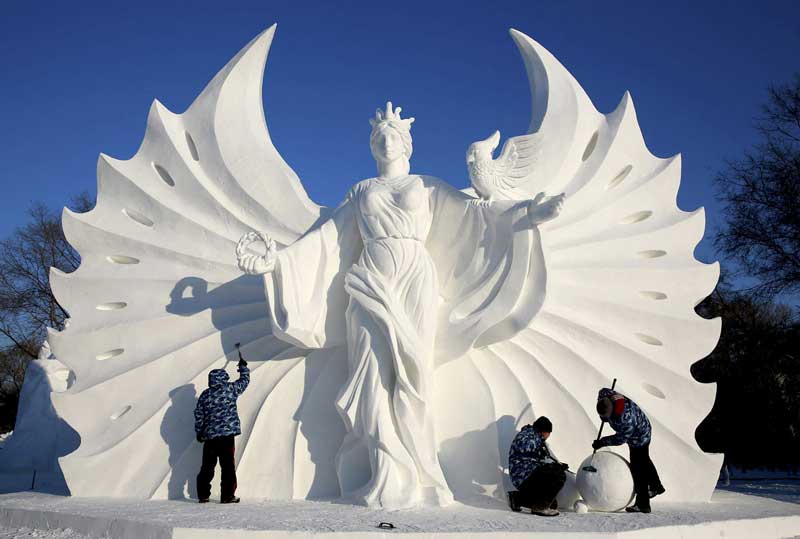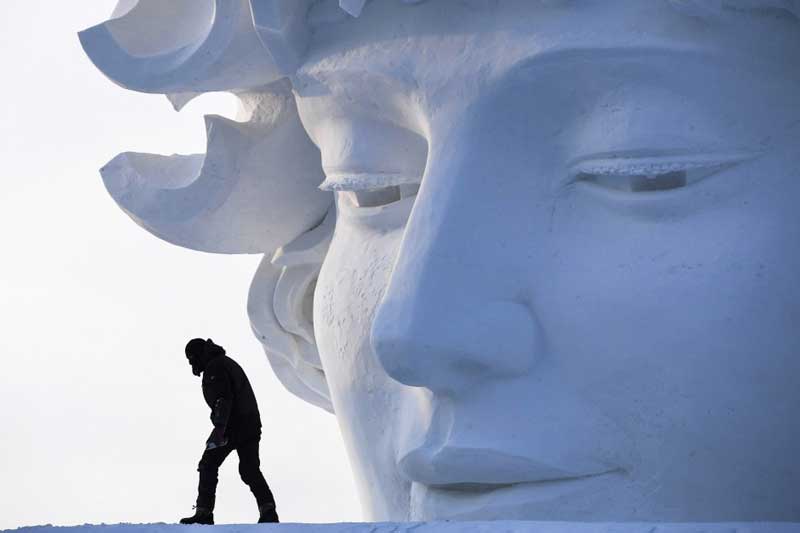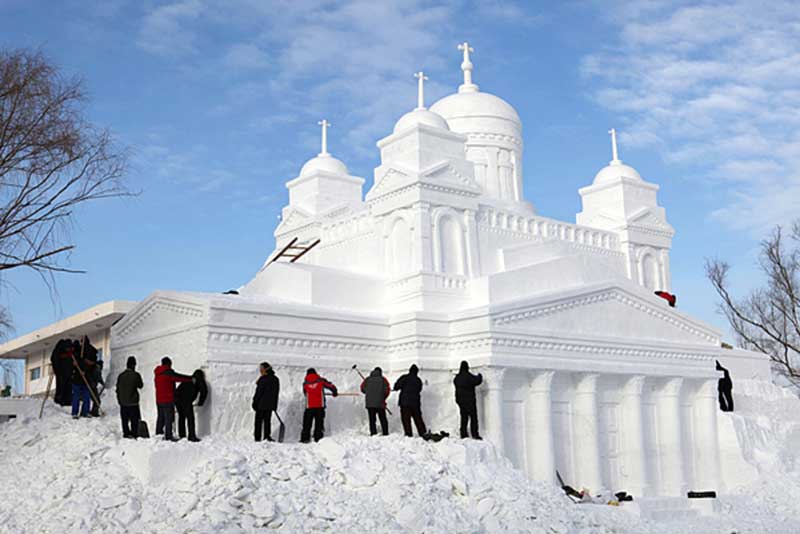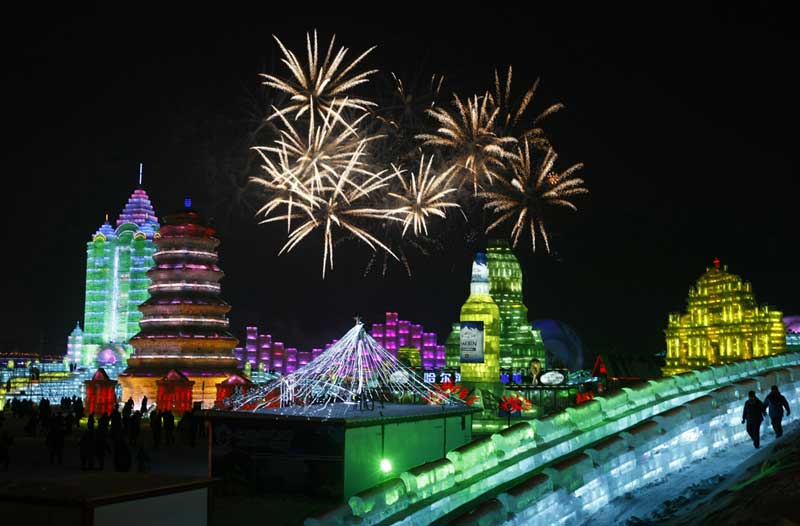
Every year, in the frigid northeast Heilongjiang province of China, the city of Harbin proudly hosts the Harbin International Ice and Snow Sculpture Festival, which is said to be the largest of its kind in the world. It brings artists from all over the world to create an amazing icy winter wonderland filled with castles, towers, bridges, and other incredible giant ice sculptures. To add to the natural beauty of the ice and snow, the creations are illuminated at the end of the day with multi coloured lights, which magically transforms the huge area into an unbelievable fairy land. Technologically sophisticated lightning effects are created with the use of computer controlled LEDs and regular lights to animate the stunning displays of colour and design.
While the dazzling multicoloured ice sculptures light up the entire ground, fireworks light up the dark sky on various evenings.

Every year, the festival is officially held from January 5 to February 5. However, the continuation of the festival solely depends upon the weather condition and the exhibits are often open earlier and stay longer. Under the influence of the biting winds from Siberia, winter temperatures in Harbin sometimes fall to even minus 38°C (-100°F), which permits the festival to proceed without any fear of meltdown.

The Snow and Ice Festival originated during Harbin's traditional ice lantern show and garden party in the winter of 1963. However, it was interrupted for a number of years during the Cultural Revolution, but bounced back with a bang, when the opening of the first Harbin Ice Festival was celebrated at Zhaolin Park on 5 January 1985 and was announced as an annual event. Much later, in 2001, the Harbin Ice Festival was merged with the Heilongjiang International Ski Festival and got its new formal name China Harbin International Ice and Snow Sculpture Festival.
Though the participants of the festival were mainly Chinese at the initial stage, it has since become an International event and competition, with the 2017 festival attracting 18 million visitors.


The theme of the festival changes every year. During the past, it included, among others, the Beijing Olympics, Pyramids, Sphinxes, the enormous statues of Lord Buddha, Disney castle, snowy whales and supersized Chinese fishermen, glistening bluish white during the day and illuminated purple and neon green after dusk. The tallest ice carving in recent years was the 48 m tall Crystal Castle, which was just shy of the height of Arc de Triomphe in Paris.

Since the city of Harbin generally has an Arctic type of climate, it offers abundant supply of natural ice and snow. During the festival, though the entire city is decorated with ice sculptures, there are four main exhibition areas. The Sun Island, situated on the opposite side of the Songhua River, features an expo of enormous snow sculptures, while the Ice and the Snow World is an area open at night, featuring illuminated full size buildings, made from blocks of 2/3 feet thick ice transported directly from the Songhua River.
Apart from that, the Songhua River Ice and Snow Harbin Valley is a wide area for daytime snow and adventure sports and the Zhaolin Park Ice Lantern Fair offers many strange interactive exhibits.


Today, apart from the international competition of ice sculptures, illuminated buildings made from the huge ice blocks and the traditional ice lantern show, the China Harbin International Ice and Snow Sculpture Festival also offers many events and competitions like winter swimming, ice hockey, snow football, sledding, winter fishing, firework display, short track speed ice skating game and even snow wedding ceremonies. For years, the festival has become the world’s most important winter tourist destination and photographers’ paradise. During the chill wintry days, thousands upon thousands of tourists from all over the world flock to the ice city for their winter vacations, family holidays or honeymoon.